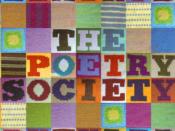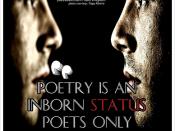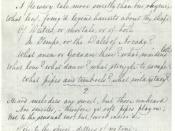'Ode on a Grecian Urn' is a delightfully reflective, lyrical poem, which contemplates the beauty of static art with the transience of life. Although initially we revel in the enchanting charm of the urn depicted we understand that art is eternal in its moment of emotion, and what it gains in its infinite life it also looses with the lack of motion of it being fixed. By looking at the intricate poetic language Keat's chooses for this ode we are allowed access to the enchanting images of the urn and also into the introspective mood of Keat's himself.
The word 'ode' derives from an ancient Greek word meaning 'song' which sets the mood of the piece. We see the art of the urn and also the lamentations and meditations of the poet as having many perspectives like that in a song which can display a range of emotions. The ode open with a series of personifications of the Grecian urn, it is a 'still unravish'd bride', a 'foster-child of silence' and a 'Sylvan historian'.
These paradoxical images suggest it taking many forms, it can speak yet it is silent. This draws attention to the fact it is art, it will remain static, and it is not a moving consciousness. The first two lines are ended with commas and a ceasural pause interrupts line 3. This allows us to consider the very separate, differing guises of the urn before we move onto yet another metaphor. The fact it is a 'still unravish'd bride' adds a duplicity of meaning. 'Still' can be understood as a verb suggesting the urn has the unmoving perfection of a bride. Or it can be understood as an adjective suggesting it is empty and devoid of human emotion being a work of art. Keats uses the ambiguity...


